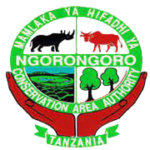Mount Kilimanjaro, Tanzania
7 Days 6 Nights Kilimanjaro Climb Rongai Route

The Rongai route is the only route Kili Step 2 Safaris approaches Kilimanjaro from the north, close to the Kenyan border. Though gaining popularity amongst climbers, Rongai has low traffic. It is the preferred route for those looking for an alternative to the crowded Marangu route, for those who would like a more remote hike, and for those who are climbing during the rainy season (the north side receives less precipitation).
| Destination | Kilimanjaro National Park |
|---|---|
| Duration | 7 Days 6 Nights |
| Tour Type | Climbing, Hiking, Trekking |
| Accommodation Type | Camping |
| Group Size | No size limit |
| Tour Guides Language: | English |
| Starting Point: | Airport / Moshi / Arusha |
| Ending Point: | Airport / Moshi / Arusha |
Day By Day Itineraries
Drive to the attractive wooden village of Nale Moru (about 2 hours including a stop to get permits at Marangu). After signing in and preparing the porters, you will begin the hike on a wide path Kili Step 2 Safaris winds through fields of maize and potatoes before entering pine forest. The track then starts to climb consistently but gently through attractive forest Kili Step 2 Safaris shelters a variety of wildlife. The forest begins to thin out and the first camp is at the edge of the moorland zone with extensive views over the Kenyan plains.
- Elevation: 2000m/6560ft to 2650m/8700ft
- Distance: 6km/4mi
- Hiking Time: 3-4 hours
- Habitat: Montane Forest
- Meals: Lunch and Dinner
The morning hike is a steady ascent up to the Second Cave with superb views of Kibo and the Eastern ice fields on the crater rim.
- Elevation: 2650m/8700ft to 3450m/11,300ft
- Distance: 6km/4mi
- Walking Time: 3-4 hours
- Habitat: Moorland
- Meals: Breakfast, Lunch and Dinner
Head out across the moorland on a smaller path towards the jagged peaks of Mawenzi. The campsite is in a sheltered valley with giant Senecios nearby.
- Elevation: 3450m/11,300ft to 3600m/11,800ft
- Distance: 9km/5mi
- Walking Time: 2-3 hours
- Habitat: Semi-desert
- Meals: Breakfast, Lunch and Dinner
A short but steep climb up grassy slopes is rewarded by superb views. Leave the vegetation behind shortly before reaching the next camp at Mawenzi Tarn, spectacularly situated in a cirque directly beneath the towering spires of Mawenzi. The afternoon will be free to rest or explore the surrounding area as an aid to acclimatization.
- Elevation: 3600m/11,800ft to 4330m/14,200ft
- Distance: 6km/4mi
- Walking Time: 3-4 hours
- Habitat: Semi-desert
- Meals: Breakfast, Lunch and Dinner
Cross the lunar desert of the ‘Saddle’ between Mawenzi and Kibo to reach Kibo campsite at the bottom of the Kibo crater wall. The remainder of the day is spent resting in preparation for the final ascent very early.
- Elevation: 4330m/14,200ft to 4750m/15,600ft
- Distance: 9km/5mi
- Hiking Time: 4-5 hours
- Habitat: Alpine Desert
- Meals: Breakfast, Lunch and Dinner
Very early in the morning (midnight to 2am), commence the climb to the summit on steep and heavy scree or snow up to Gilman’s Point located on the crater rim (elev 5700m/18,700ft). Continuing, we now ascend to Uhuru Peak, which is the highest point in Africa. There are unbelievable views at every turn. Have your picture taken at the summit to show your friends and family. From here we descend, stopping for lunch and a rest at Kibo before continuing on to the Horombo encampment.
The beginning of this climb is done in the dark and requires headlamps or flashlights. It will be very cold until you start descending, so you will need all of your warm layers. This is by far the most difficult part of the trek with many switchbacks. Going slowly “pole pole” and an optimistic attitude will get you there!
- Elevation: 4700m/15,500ft to 5895m/19,340ft
- Down to 3700m/12,200ft
- Distance: 6km/4mi up / 15km/9mi down
- Hiking Time: 6-8 hours up / 6-8 hours down
- Habitat: Alpine Desert
- Meals: Breakfast, Lunch and Dinner
After breakfast, a steady descent takes us down through moorland to the Mandara Hut. Continue descending through lush forest path to the National Park gate at Marangu. At lower elevations, it can be wet and muddy. Gaiters and trekking poles will help. Shorts and t-shirts will probably be plenty to wear (keep rain gear and warmer clothing handy).Drive back to the hotel.
- Elevation: 3700m/12,200ft to 1700m/5500ft
- Distance: 20km/12.5mi
- Hiking Time: 4-5 hours
- Habitat: Forest
- Meals: Breakfast
Price includes
| Included |
Private pick up and drop off at Kilimanjaro international airport. Pre & Post Trek accommodation Park fees, Hut fees & rescue fees Professional mountain guides, cooks and porters Transportation to & from the mountain gate 3 meals daily while on the mountain Fair wages for the mountain crew as approved by the Kilimanjaro National Park Authority (KINAPA), Kilimanjaro Association of Tour Operators (KIATO) Filtered water throughout the trek Government taxes VAT 18% on park entrance fees Salary for the Guides,porters,Cooks |
|---|---|
| Excluded |
Flights Personal expenses such as beverages (other than those included with meals, as listed in each itinerary) Tips to mountain crew Laundry Services Insurance Costs of visas |














